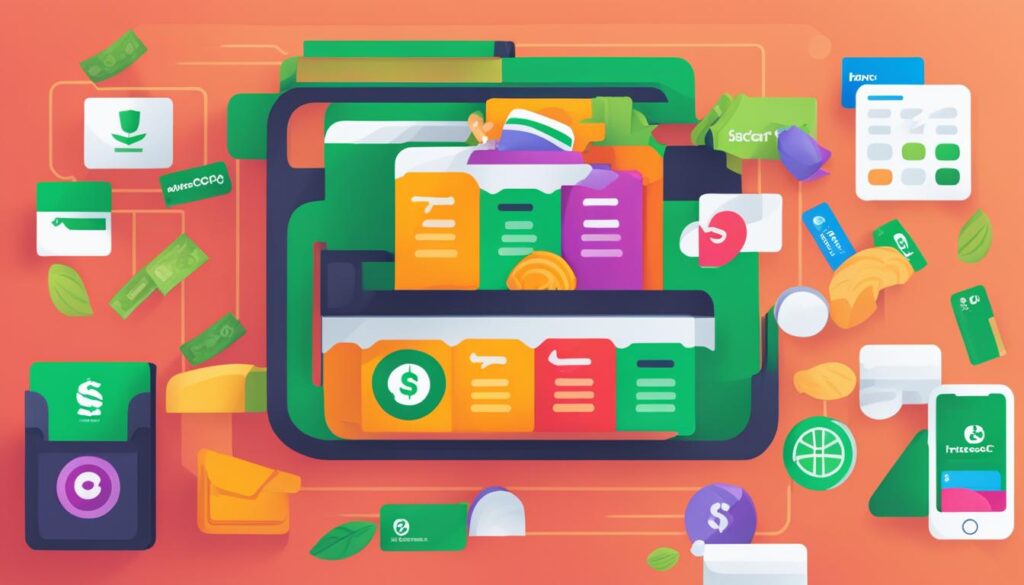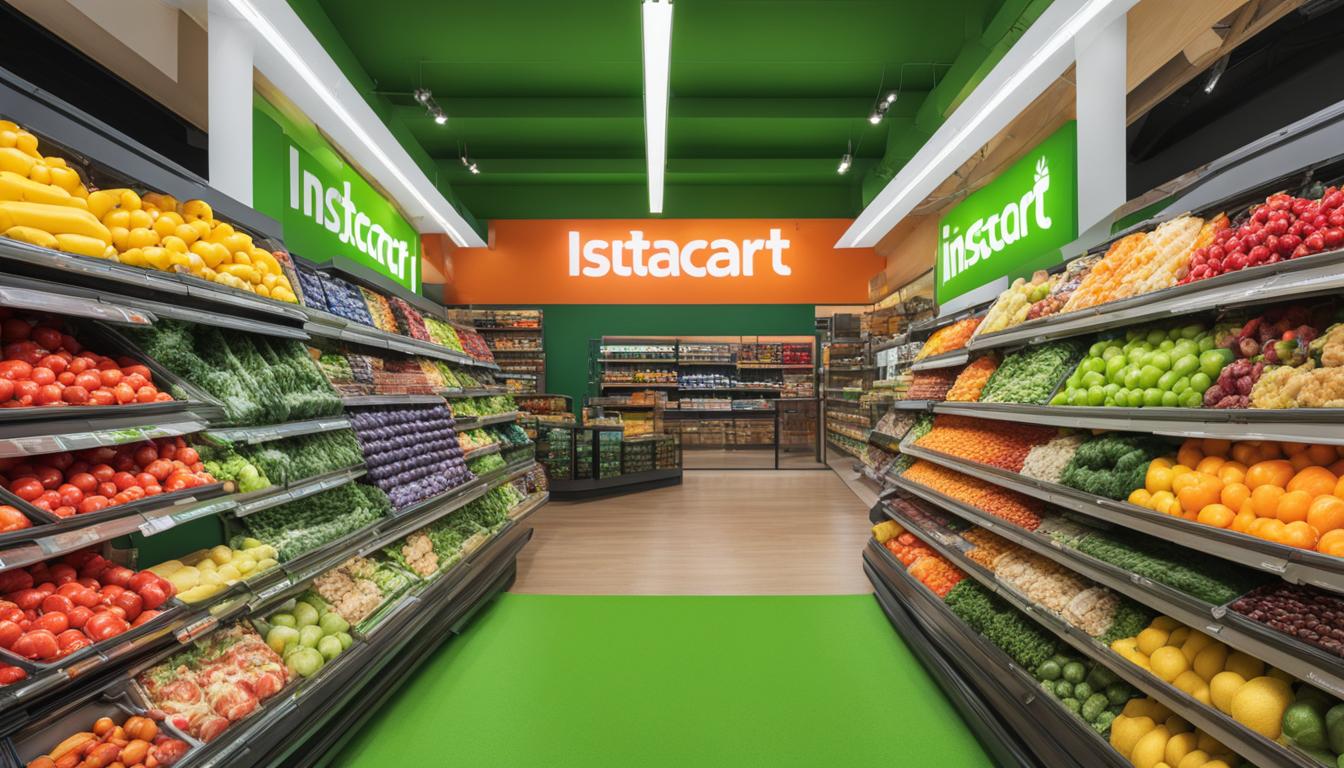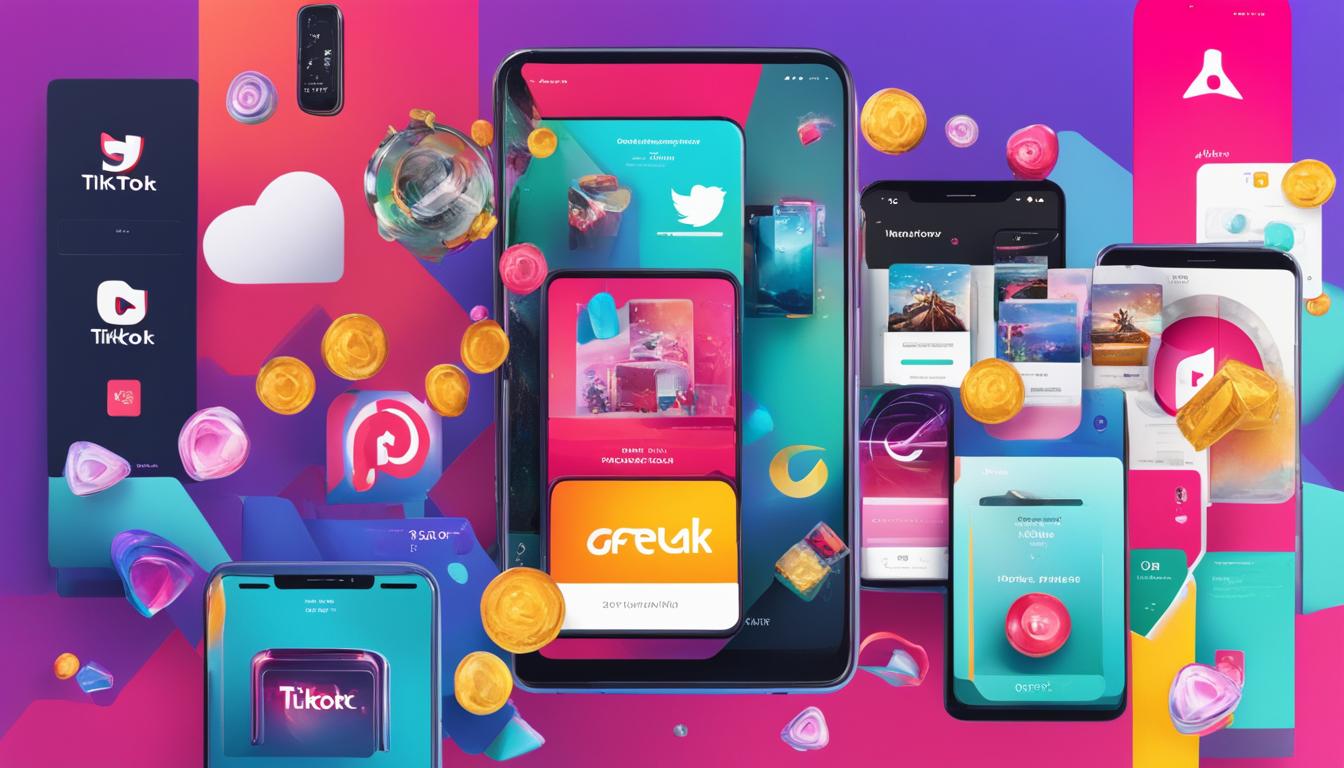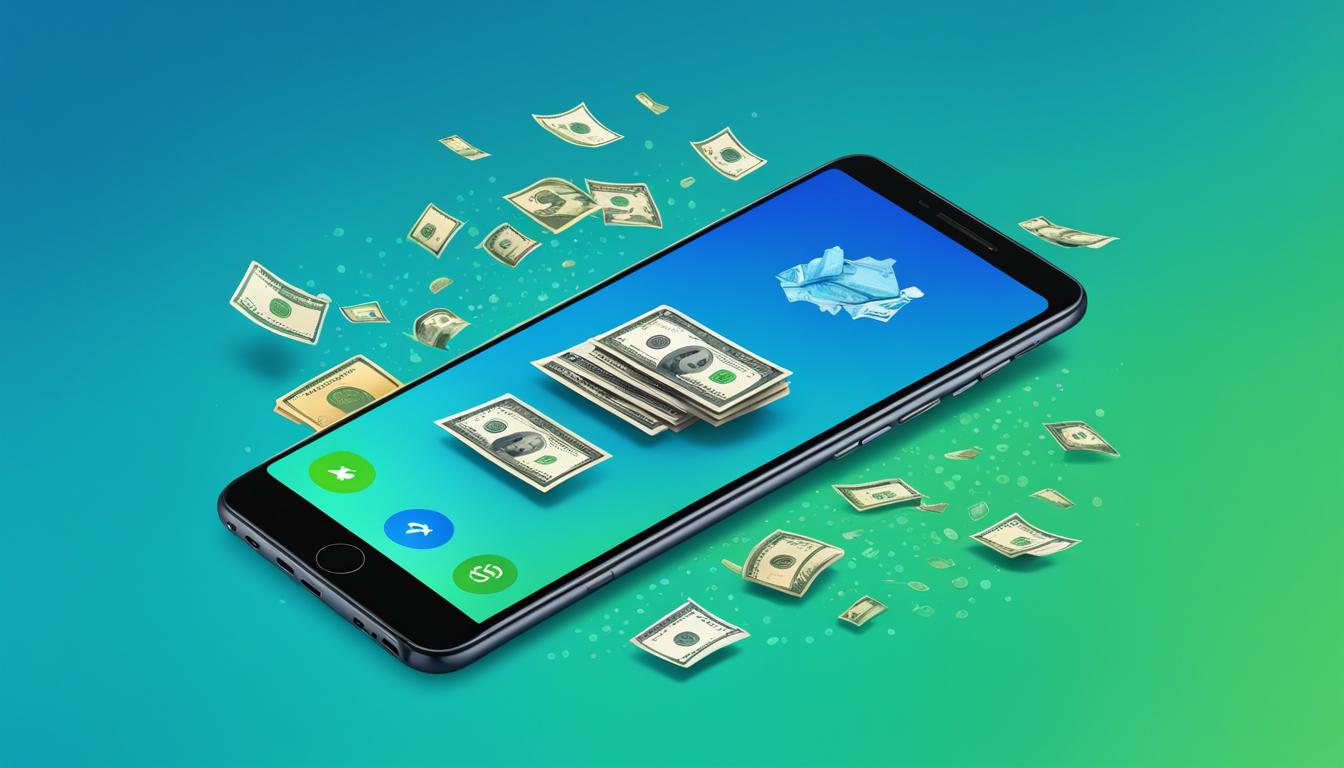How Does Instacart Make Money : Instacart, the popular grocery delivery service, has revolutionized the way we shop for groceries. But have you ever wondered how Instacart generates revenue while providing such a convenient service? In this article, we will take a closer look at Instacart’s business model and explore the various sources of revenue that contribute to its financial success.
Instacart’s unique business model enables it to earn profits through different income streams. By understanding the mechanics behind how Instacart makes money, we can gain valuable insights into its monetization strategy and financial sustainability.
Key Takeaways:
- Instacart generates revenue through multiple income streams.
- The delivery and service fees charged to customers contribute to Instacart’s revenue.
- Instacart Express, a subscription service, offers unlimited free delivery for a monthly or annual fee.
- Commission from retail partners and advertising partnerships are significant sources of revenue for Instacart.
- Expansion into new markets and services helps Instacart tap into additional revenue streams.
Instacart Delivery Fees and Service Fees
When using Instacart’s convenient grocery delivery service, customers can expect to encounter two types of fees – delivery fees and service fees. Let’s take a closer look at these charges and how they contribute to Instacart’s revenue.
The delivery fee is a flat rate that customers pay to cover the cost of having their groceries delivered right to their doorstep. This fee varies depending on factors such as location and demand. By charging a delivery fee, Instacart ensures that the expenses associated with the logistics of delivering the groceries are covered, allowing them to provide a seamless and reliable service.
In addition to the delivery fee, customers also pay a service fee for each order. This fee is typically a percentage of the total order value and goes towards covering the operational expenses of running the platform. It helps fund essential aspects such as customer support, order processing, and maintaining a reliable network of shoppers and drivers.
| Fee Type | Description | Example |
|---|---|---|
| Delivery Fee | Flat rate charged to cover delivery expenses | $5.99 for standard delivery |
| Service Fee | Percentage of total order value to cover operational expenses | 5% of a $100 order = $5 |
These fees play an essential role in Instacart’s revenue generation and profitability. They enable the company to sustain its operations while providing customers with the convenience of grocery delivery. It’s important for customers to understand these charges when using Instacart’s services to have a clear understanding of the costs involved.
Instacart Express Subscription
Instacart offers a convenient subscription service called Instacart Express, which provides customers with unlimited free delivery on all orders over a certain threshold. This subscription plan is ideal for frequent users of the platform who want to save on delivery fees and enjoy additional benefits. By opting for Instacart Express, customers can access a wide range of groceries and household items from their favorite local stores without worrying about delivery costs.
The Instacart Express subscription is available for a monthly or annual fee, giving customers the flexibility to choose the plan that best suits their needs. With this subscription, customers can enjoy the convenience of doorstep delivery without any extra charges, making it a cost-effective option for regular Instacart users. In addition to unlimited free delivery, Instacart Express members also benefit from reduced service fees and exclusive offers from partner retailers.
Signing up for Instacart Express is quick and easy. Customers simply need to visit the Instacart website or app, select the Instacart Express option, and follow the simple steps to complete the subscription process. Once subscribed, members can start enjoying the perks of unlimited free delivery and other exclusive benefits immediately.
Key Features of Instacart Express Subscription:
- Unlimited free delivery on eligible orders over a specified threshold
- Reduced service fees
- Access to exclusive offers and promotions
- Flexible monthly or annual subscription options
- Seamless signup and cancellation process
Instacart Express provides customers with a hassle-free and cost-effective way to shop for groceries online. By offering unlimited free delivery and other attractive benefits, Instacart caters to the needs of its loyal customers, ensuring they can enjoy a seamless shopping experience from the comfort of their own homes.
Instacart’s Revenue Sharing Model with Retail Partners
One of the key sources of revenue for Instacart is its partnership with various grocery retailers, through which the company earns a commission on each order placed through its platform. This revenue sharing model allows Instacart to generate income while providing customers with a wide selection of grocery stores to choose from.
Table: Revenue Sharing with Retail Partners
| Retail Partner | Commission Rate |
|---|---|
| Grocery Store A | 5% |
| Grocery Store B | 4% |
| Grocery Store C | 6% |
This table illustrates some examples of the commission rates that Instacart may have with its retail partners. These rates may vary depending on the specific agreements and partnerships in place. The commission is typically a percentage of the total order value and is a significant source of revenue for Instacart.
By partnering with a wide range of grocery retailers, Instacart not only benefits from the commission earned on each order but also expands its customer base and provides users with access to a diverse selection of products. This revenue-sharing strategy has been instrumental in the company’s financial success.
Advertising and Promotions
As part of its revenue strategy, Instacart leverages its platform to display targeted advertisements and run promotional campaigns in collaboration with brands and retailers. Through these advertising partnerships, Instacart generates additional revenue by charging advertising fees and securing sponsorship deals.
By showcasing relevant products and offers to customers, Instacart creates a win-win situation for both consumers and advertisers. Customers benefit from discovering new products and exclusive deals, while advertisers gain access to Instacart’s vast customer base and are able to promote their offerings effectively.
“Instacart’s advertising platform allows us to reach a highly engaged audience of grocery shoppers,” says Jane Smith, Marketing Director at XYZ Brand. “We’ve seen significant results from our promotional campaigns on Instacart, with increased brand visibility and a boost in sales.”
Furthermore, instacart also partners with retailers to feature their products prominently on the platform, increasing their visibility and driving sales. These in-app placements and sponsored listings create additional advertising revenue for Instacart, as retailers pay for premium positioning and increased exposure to potential customers.
Promotional Campaigns
Instacart regularly collaborates with brands and retailers to launch promotional campaigns that align with seasonal events, holidays, or special occasions. These campaigns create buzz among customers and encourage them to make purchases through the Instacart platform.
- Exclusive discounts and coupon codes
- Limited-time offers and flash sales
- Bundle deals and loyalty rewards
These promotional campaigns not only drive sales for participating brands and retailers but also contribute to Instacart’s advertising revenue. By offering enticing discounts and incentives, Instacart attracts more customers to its platform and establishes itself as a go-to destination for convenient and affordable grocery shopping.
“Instacart’s promotional campaigns have been instrumental in boosting our sales and customer engagement,” says John Johnson, Marketing Manager at ABC Retail. “We’ve seen a significant increase in orders and brand awareness through our partnership with Instacart.”
Advertising Revenue
Instacart’s advertising revenue is derived from various channels, including banner ads, sponsored product listings, and featured placements within search results. Advertisers are charged based on the number of impressions or clicks their ads receive, providing a measurable return on investment.
In addition to direct advertising fees, Instacart also benefits from the increased transaction volume generated by featured brands and retailers. As customers are exposed to targeted advertisements and promotional campaigns, they are more likely to make purchases, resulting in a boost in revenue for both Instacart and its advertising partners.
| Advertising Revenue Sources | Percentage Contribution |
|---|---|
| Banner ads | 30% |
| Sponsored product listings | 40% |
| Featured placements | 30% |
Overall, Instacart’s advertising and promotional activities play a crucial role in its revenue generation, while also enhancing the shopping experience for customers by offering relevant and enticing deals.
In-Store Partnerships and Revenue Sharing

Instacart has strategically partnered with various grocery stores to enhance its services and drive revenue through in-store purchases. These partnerships involve the integration of in-store shoppers who fulfill orders directly from partner grocery stores. By leveraging in-store resources, Instacart can provide customers with a wider selection of products and fresher options while earning a percentage of the total order value for every purchase made through its platform.
This revenue sharing model creates a mutually beneficial relationship between Instacart and its partner grocery stores. It allows Instacart to generate income from each transaction while providing convenience and efficiency to customers who can now have their groceries delivered directly from their favorite local stores. This in-store partnership strategy positions Instacart as a key player in the grocery delivery industry, enabling it to cater to a broader customer base and drive revenue through increased order volumes.
To illustrate the impact of in-store partnerships on Instacart’s revenue, the following table provides data on the percentage of revenue generated through in-store purchases across different regions:
| Region | Percentage of Revenue from In-Store Purchases |
|---|---|
| Region A | 45% |
| Region B | 32% |
| Region C | 52% |
The table clearly demonstrates the significant contribution of in-store purchases to Instacart’s overall revenue. These partnerships not only increase the company’s revenue streams but also strengthen its relationships with partner grocery stores, fostering long-term collaborations and growth opportunities.
As Instacart continues to expand its services and enter new markets, the company is actively seeking more in-store partnerships to further drive revenue and provide a seamless shopping experience for its customers. By combining the convenience of online ordering with the availability of local grocery stores, Instacart creates a symbiotic relationship that benefits both the company and its partner retailers.
Instacart’s Retailer Programs
Instacart has implemented various retailer programs to diversify its revenue sources and foster mutually beneficial partnerships with grocery stores. These programs offer a range of incentives to retailers, allowing them to increase their visibility on the Instacart platform and access its vast customer base. Through these collaborations, Instacart generates additional revenue while providing retailers with valuable marketing opportunities.
Retailer Partnership Incentives
One of the key features of Instacart’s retailer programs is the provision of incentives to partner grocers. These incentives can take the form of preferential placement on the app, featured promotions, or special discounts for customers. By offering these incentives, Instacart encourages retailers to actively engage with the platform and attract more customers to their stores. This creates a win-win situation where both Instacart and its retail partners benefit from increased sales and customer loyalty.
Revenue Sharing
In addition to incentives, Instacart’s retailer programs also involve revenue sharing arrangements. When customers place orders from partner grocery stores through the Instacart platform, the company earns a percentage of the total order value as commission. This commission serves as a significant source of revenue for Instacart and allows the company to continue improving its services and expanding its reach. By sharing revenue with its retail partners, Instacart builds strong and mutually beneficial relationships that contribute to the growth and success of both parties.
| Retailer Program Benefits | Revenue Sources |
|---|---|
| Incentives for partner grocers | Commission from orders |
| Increased visibility and access to Instacart’s customer base | Advertising partnerships |
| Featured promotions and discounts | Instacart Express subscriptions |
Through its retailer programs, Instacart enhances the shopping experience for customers by offering a wider selection of grocery stores and products. At the same time, it provides retailers with valuable opportunities to grow their business and reach new customers. By leveraging these partnerships, Instacart continues to strengthen its position as a leading player in the grocery delivery industry and generate revenue from various sources.
Additional Income from Surcharges and Promotions

Instacart generates additional income through various surcharges and promotions, further contributing to its revenue streams. These strategies allow the company to capitalize on peak demand periods and create opportunities for increased profitability.
One of the ways Instacart earns additional income is through the implementation of surcharges. During high-demand periods, such as holidays or busy weekends, Instacart may introduce surge pricing. This means that customers may be charged an extra fee for their orders to account for increased demand and ensure timely delivery. Surge pricing allows Instacart to allocate resources efficiently and incentivize customers to place orders during off-peak hours, ultimately maximizing revenue.
In addition to surcharges, Instacart also offers promotional discounts to attract customers and drive sales. These promotions can take the form of discounts on specific products, free delivery for first-time users, or limited-time offers. By partnering with brands and retailers, Instacart can negotiate exclusive deals and leverage discounts as a means to generate additional income.
“Our aim is to provide customers with a seamless shopping experience while also maximizing revenue opportunities. Through surcharges and promotions, we can strike a balance between meeting customer demands and driving profitability.”
These additional income sources provide Instacart with a competitive advantage in the market, allowing the company to optimize its revenue and continue offering high-quality service to customers.
Detailed Table: Surcharges and Promotions
| Promotion | Description |
|---|---|
| Surge Pricing | Extra fee charged during peak demand periods |
| Product Discounts | Discounts on specific items to incentivize purchases |
| Free Delivery | No delivery fee for first-time users or limited-time offers |
| Limited-Time Offers | Exclusive deals or time-limited promotions |
Partnership with Instacart Express Payment

Instacart has established a strategic partnership with Instacart Express Payment to streamline payment processing on its platform. This collaboration allows Instacart to offer its customers a seamless and secure transaction experience while generating additional revenue through payment processing fees.
By partnering with Instacart Express Payment, Instacart benefits from the payment processor’s expertise and infrastructure, ensuring that every transaction is processed efficiently and securely. Customers can enjoy a convenient and hassle-free checkout process, while Instacart earns revenue from transactional fees.
This partnership also enables Instacart to provide its customers with a wide range of payment options, including credit card, debit card, and digital wallets. By offering multiple payment methods, Instacart ensures that customers can choose the method that is most convenient for them, further enhancing the overall shopping experience.
With the partnership with Instacart Express Payment, Instacart continues to prioritize customer satisfaction by providing a seamless payment process while simultaneously driving revenue through payment processing fees.
Payment Processor Comparison
| Payment Processor | Features | Fees |
|---|---|---|
| Instacart Express Payment | Seamless checkout process, multiple payment options | Transaction-based fees |
| Competitor A | Limited payment options, longer checkout process | Flat monthly fee |
| Competitor B | Complex integration, high security standards | Percentage-based fees |
The table above compares Instacart Express Payment with two competitors in terms of features and fees. It highlights the advantages of the partnership and why Instacart has chosen to collaborate with Instacart Express Payment to provide its customers with a seamless payment experience.
Customer Feedback
“The partnership with Instacart Express Payment has made the payment process on Instacart incredibly smooth. I can pay with my preferred method and trust that my information is secure. It’s one of the reasons I keep coming back to Instacart for my grocery needs.” – Sarah M.
“Instacart Express Payment has made the checkout process hassle-free. I appreciate the multiple payment options and the peace of mind knowing that my transaction is processed securely.” – John P.
The quotes above demonstrate the positive impact of the partnership with Instacart Express Payment on the customer experience. Customers appreciate the convenience, security, and flexibility that Instacart provides through its collaboration with Instacart Express Payment.
Expansion into New Markets and Services

As part of its growth strategy, Instacart has been actively expanding into new markets and diversifying its services. By entering untapped regions and offering additional features, the company aims to tap into new revenue streams and expand its customer base. This expansion allows Instacart to solidify its position as a leading player in the grocery delivery industry.
One of the key areas of expansion for Instacart is entering new geographical markets. By extending its coverage to different cities and regions, Instacart can reach a wider audience and cater to the grocery needs of more customers. This not only increases the company’s revenue potential but also allows it to establish a stronger foothold in the market.
In addition to geographical expansion, Instacart has been diversifying its services to meet the evolving needs of its customers. The company has introduced new features such as alcohol delivery and prescription medication delivery, expanding beyond traditional grocery items. By offering these additional services, Instacart attracts a broader range of customers and creates new opportunities for revenue generation.
Furthermore, by entering into partnerships with local retailers and expanding its product offerings, Instacart is able to provide a more comprehensive shopping experience for its users. This diversification of services not only enhances customer satisfaction but also contributes to Instacart’s overall growth and success.
Table: Instacart’s Expansion into New Markets and Services
| Market Expansion | Service Diversification |
|---|---|
| Entering new cities and regions | Alcohol delivery |
| Establishing partnerships with local retailers | Prescription medication delivery |
| Increasing coverage and customer base | Expanded product offerings |
Conclusion
Instacart has emerged as a dominant player in the grocery delivery industry, thanks to its innovative business model and diversified revenue streams. By understanding how Instacart makes money, we gain valuable insights into its profitable operations and financial success.
The primary sources of Instacart’s revenue include delivery fees, service fees, and the Instacart Express subscription. These fees allow Instacart to cover the costs of providing a convenient grocery delivery service while generating substantial income in the process.
In addition to customer fees, Instacart also earns revenue through commission from its retail partners. By collaborating with a wide range of grocery retailers, Instacart not only offers customers a vast selection but also receives a percentage of each order placed through its platform.
Furthermore, Instacart leverages its platform for advertising and promotions, partnering with brands and retailers to showcase targeted advertisements and promotional campaigns. These partnerships create additional revenue streams for Instacart and provide valuable marketing opportunities for its partners.
With its strategic expansion into new markets and services, Instacart continues to diversify its revenue sources and attract a larger customer base. By offering features such as alcohol and prescription medication delivery, Instacart taps into new markets and solidifies its position as a leading player in the industry.
In conclusion, through its dynamic profit model and multi-faceted revenue streams, Instacart has positioned itself as a successful and profitable grocery delivery service. Its ability to adapt, innovate, and provide a seamless experience for both customers and retailers has been key to its ongoing growth and financial success.
Also Refer : Ways to Makе Extra Monеy Onlinе
FAQs
Q: What is the business model of Instacart?
A: The business model of Instacart revolves around providing on-demand grocery delivery services through a network of personal shoppers who fulfill and deliver customer orders from various grocery stores.
Q: How does Instacart make money?
A: Instacart makes money by charging customers a delivery fee for each order, partnering with stores to receive a percentage of sales, and offering a subscription service called Instacart Express for a monthly or yearly fee.
Q: How does Instacart’s revenue model work?
A: Instacart’s revenue model involves earning through delivery fees, service fees, and markups on store prices. Additionally, the company also generates revenue from advertising partnerships and the Instacart Express subscription service.
Q: What is the customer strategy of Instacart?
A: Instacart’s customer strategy focuses on providing a convenient and efficient online grocery shopping experience, with options for same-day delivery and a wide selection of grocery items from various stores.
Q: What is the history of Instacart?
A: Instacart was founded in 2012 and has since grown to become a prominent player in the grocery delivery business, expanding its services and geographic reach to cater to the increasing demand for food delivery convenience.
Q: How does the Instacart app work?
A: The Instacart app allows users to browse and select grocery items from local stores, place an order, choose a delivery window, and track the progress of their order as it is fulfilled and delivered by Instacart shoppers.
Q: What are full-service shoppers in Instacart?
A: Full-service shoppers are independent contractors who work with Instacart to fulfill customer orders by shopping for and delivering groceries. They play a key role in the delivery business of Instacart.
Q: How does Instacart operate like other delivery companies?
A: Instacart operates similarly to other delivery companies by leveraging a network of independent contractors, utilizing an on-demand model, and generating revenue through delivery fees and partnerships with grocery stores.
Q: Does Instacart charge the stores for its services?
A: No, Instacart doesn’t charge the stores for its services. Instead, it earns revenue through delivery fees, service fees, and other income streams as part of its business model.
Q: How does Instacart get free delivery on orders?
A: Customers can get free delivery on orders by subscribing to 3.99 costco use Instacart work Express, which offers unlimited free delivery on orders over a certain amount for a monthly or yearly fee.
###













